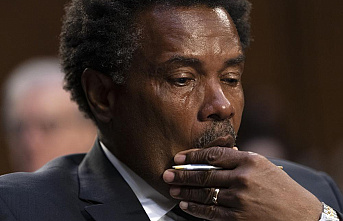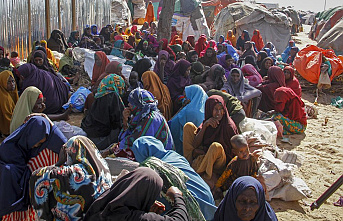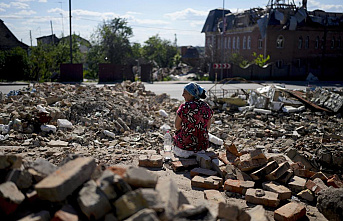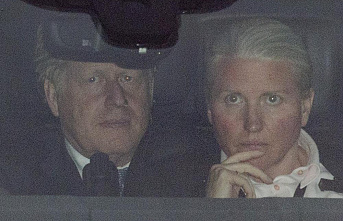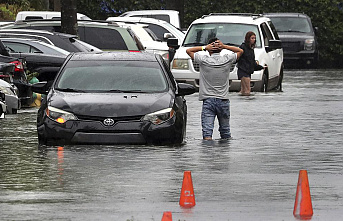The door is open, but the cemetery is empty. Neither a vigilante nor the undertaker, to which the neighbors call Mouse. Walking on the grass, between headstones, worn and crosses, is how to do it on a cushioned mat. Next to the walls, the soil removed. It is the morning of christmas Eve and this was one of the scenarios of horror that convulsed Colombia during the armed conflict. On 14 December, the Special Jurisdiction for Peace (JEP), the court is born of the agreements between the State and the FARC, whose mission is to judge the crimes of the war, announced the discovery of a mass grave. The researchers were located in Dabeiba, a town of about 20,000 inhabitants, about four hours from Medellin the road to the Caribbean coast, the remains of at least 50 people. “It is horrible. I hope justice is done”. The voice of Martha Olive Wheel breaks the stillness of the place from the door of his house, a building surrounded by flowers and improvised on a mound that borders the cemetery.
Were, according to the testimony of a an ex military man and the evidence of the case, murdered by members of the Army and later presented as guerrillas fallen in combat in exchange for rewards. These executions, the umpteenth case of a systematic practice called false positives, occurred between 2005 and 2007 and are a small sample of the numbers of vertigo that left more than half a century of violence. In addition to the more than 260,000 dead, according to the calculations of the Center of Historical Memory, a public agency, there were between 80,000 and 100,000 missing persons, although the Institute of Legal Medicine estimated that still there are 200,000 dead bodies to identify. Victims of the guerrillas, the paramilitaries, the Armed Forces.
Olive Wheel, 55 years, is also presented as a victim. Her husband, she says, disappeared 19 years ago while working in the field. Already under the porch of his home, apologizes for not being able to offer anything and says that his family denounced the military and received 12.5 million pesos (around 3,400 euros current) compensation. “Then I worked at the gas station, went in around two in the morning and I was afraid”. The fear was not getting home. “Those who have suffered the most in the war, we have been the farmers,” he continues. “It is now more secure, but there was always a combo of some and of others,” he said in reference to combatants and the illegal groups of the counter-insurgency, Jesus Abraham Cartagena, 70, a life working the land.
Dabeiba, in Antioquia department (northwest of the country), was plagued for decades by a perfect storm of death and injustice. Fighters, paramilitaries and sectors diverted from the Army became this municipality in one of the epicenters of the conflict. In the plebiscite on the peace accords with the FARC, 2016, in this area won the yes, as it happened in almost all the populations most punished by violence. Today it is a village chaotic and joyful that seeks to leave the past behind and celebrated Christmas with salsa, and, above all, reggaeton until the wee hours. But the drama of the disappearance, the search of family members and the closure of the wounds goes beyond that. Three years after the signing of the peace, Colombia is facing not only the transition to, directly or indirectly, determines the political debate, but rather to their memory.
Martha Olive Wheel, a neighbor of Dabeiba and the victim of the violence.The Institute of Legal Medicine is one of the entities, together with the JEP, to the Unit Search or the Truth Commission, in charge of that task. As explained by its director, Claudia Garcia, to THE COUNTRY, left approximately 200,000 dead bodies without a name in the cemeteries and clandestine graves. There, from that estimate, is where the authorities have to look for the missing. In his opinion, the pain generated is to serve to “put memory in young people”, unite society, in which the conflict left a significant gap, and provide reparation to the victims. Them, he says, “are those that are more willing to forgive”.
One of the that followed first-hand the work of the Special Jurisdiction for the Peace to the cemetery of Dabeiba was Adriana Arboleda, a lawyer and spokesperson of the National Movement of Victims of State Crimes. He argues that these exhumations will continue and continue to research so they are not left in good intentions. And to all the colombian people to understand that “these are heinous crimes”. The court notes, for example, on the last finding: “The preliminary indications indicate that it is men between 15 and 56 years, with offices in Medellin, and among those would be people in condition of disability.” In February, the court will hear the testimony of general Mario Montoya Uribe, chief of the Army until 2008, who this week was notified of a summons. The JEP explains, “you can do a recognition of truth and responsibility or deny the facts or argue that lack of connection with the conflict”.
The president, Ivan Duque, supported this research. In the past few months, Military Forces have been in the eye of the hurricane for the return of those ghosts in the collective imagination. The minister of Defense Guillermo Botero was forced to resign in early November, after discovering that he concealed an operation against a disagreement of the FARC with the killing of minors. And the commander of the Army, Nicacio Martinez Espinel, questioned by a directive that encouraged the soldiers to improve results and his past as second in command of a brigade marked for extrajudicial execution, left his post Friday, citing family reasons.
But the so-called false positives represent only a very small percentage of the disappearances. According to the Prosecution, between 1998 and 2014 there were almost 2250 murders of civilians perpetrated by the military, the vast majority during the two terms of former president Álvaro Uribe.
The extinct FARC, which today are a political party and sit in the conference with ten seats, and the paramilitary groups linked crimes for decades and in Dabeiba all have some horror story associated with each other and with others. The members of the self-defense forces continue to commit crimes under the guise of the Clan of the Gulf, the main cartel of drug traffickers from Colombia. And most of exguerrilleros in reintegration phase are concentrated in the nearby village of Llano Grande, hidden among the mountains an hour from town.
—We look to Isaiah Trujillo.
" Who seeks him?
—We are journalists, we want to visit the village.
—my name is Oscar Úsuga Restrepo.
The village of Llano Grande, an hour of Dabeiba, where returning ex-combatants of the FARC.Trujillo was the commander of the FARC for decades, one of the most investigated the former guerrilla recruitment of minors. Úsuga Restrepo is its name of civil and also is cited by the JEP. This old man, who threatened to not go to the court by the obstacles in the implementation of the agreements, it is the authority of the community and now is critical of the objections, led by Iván Márquez. “The armed struggle is no longer in effect, it makes no sense. Today there are other types of fight,” says surrounded by his family and in between stroking his sausage dog, Tony. Remember the years of the war and the clashes with the Army and the police. Dabeiba was the scene in the year 2000 of a three-day battle. Now he and the other exguerrilleros coexist with the authorities.
lower down, near the school, the football field and the health center, sergeant Lopez gives gifts to the children along with some nuns. Stuffed animals and toys, especially. This year they have received 130 thanks to a foundation. “I want to thank you for making our Christmas more happy,” one of them wrote in a card of thanks. Meanwhile, everyone is preparing to celebrate the night. Alexandra Restrepo, 18 years and a few studies of Medicine in Havana on the horizon, ensures that you will have permission to dance until five in the morning. As in the people, the urgency of the memory is interspersed with the desire to turn the page.
View from the cemetery of Dabeiba. Date Of Update: 29 December 2019, 15:00

